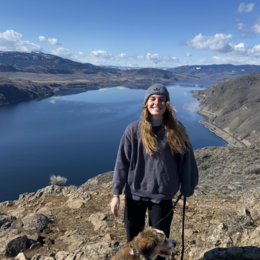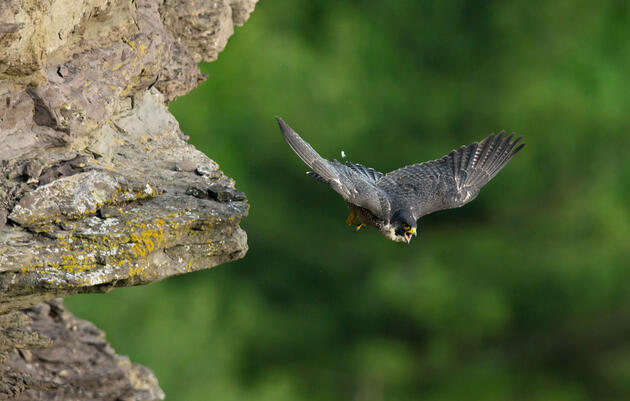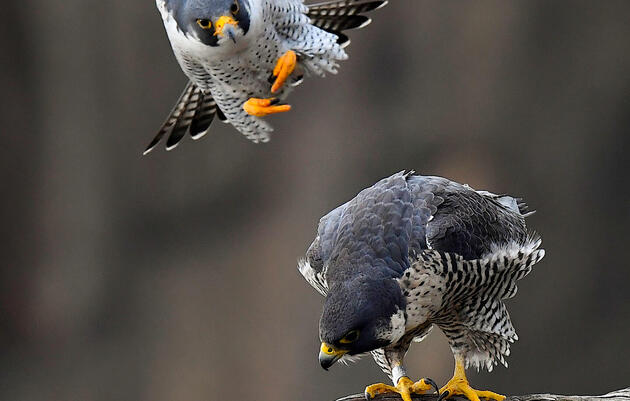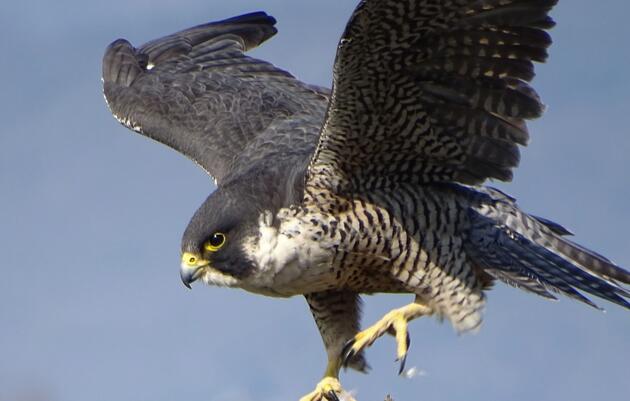It is a hot, humid summer day in Vermont. Insects crawl all around Margaret and I as we scramble our way up Prospect Rock in Manchester. We find the flattest surface we can, put our things down and wait in hopes of seeing or hearing a Peregrine Falcon. As we sit, Margaret tells me about how birds can open a whole new world once you start noticing them and their song. I have found this to be true in so many ways.
Recently I attended one of Mark LaBarr’s bird banding mornings. This was just one of many wonderful opportunities offered when serving with Audubon Vermont. As we were walking through the forest to check on mist nets, I began talking to a professor who had also joined the bird banding. We discussed the environmental field – how hard it can be in various ways and how college doesn't necessarily prepare you for the professional world. After much discussion, she asked me if I knew what I know now about the field, if I would have changed what I studied. There was not a single part of me that questioned my response - of course not. I am sure some people would have taken a second or maybe even said yes. However, I think for a lot of people, there is no way to see the environmental damage that is happening and not commit their lives to help in whatever way they can. Still, entering the environmental field can feel daunting and as though you are signing up to bear witness to environmental decline each day. To my surprise, working in the environmental field has been the best remedy for my climate anxiety.
On a few particularly buggy days, I turned to my binoculars for reprieve. If I was looking through my binoculars, I couldn’t see the gnats surrounding me, they couldn’t get in my eyes and my attention was focused on birds. I now see that experience as somewhat of a metaphor for that ‘new world’ that birds can show you. When I first joined Margaret to meet with landowners and farmers, I was not sure what to expect. Having previously worked in rural areas where conservation efforts were not always welcomed, I understood how conservation goals often do not entirely align with the goals and needs of farmers. As we spoke with the farmers, time and time again the same thing would happen. Faces softened and excitement took over while they eagerly told us about the birds on their land. There were also times when I would run into people while looking for a Peregrine Falcon site. As soon as I told them I was looking for the Peregrines, a smile would appear. The curiosity, wonder, and awe that birds incite in people really struck me. It appears birds can bring people from various backgrounds together. Even if this moment of connection and curiosity only lasted for a short time, I think it is still such an important part of conservation work. While opinions and policies will not change overnight, those moments will hopefully plant a seed in people.
This experience exposed me to so many farmers and landowners that are extremely committed to helping restore habitat for birds and pollinators. Through the projects and programs, like The Bobolink Project, I have been able to learn about various restoration and management practices. I have also been reminded that while being in the environmental field can be daunting, it is also filled with possibility, excitement and moments of connection.









